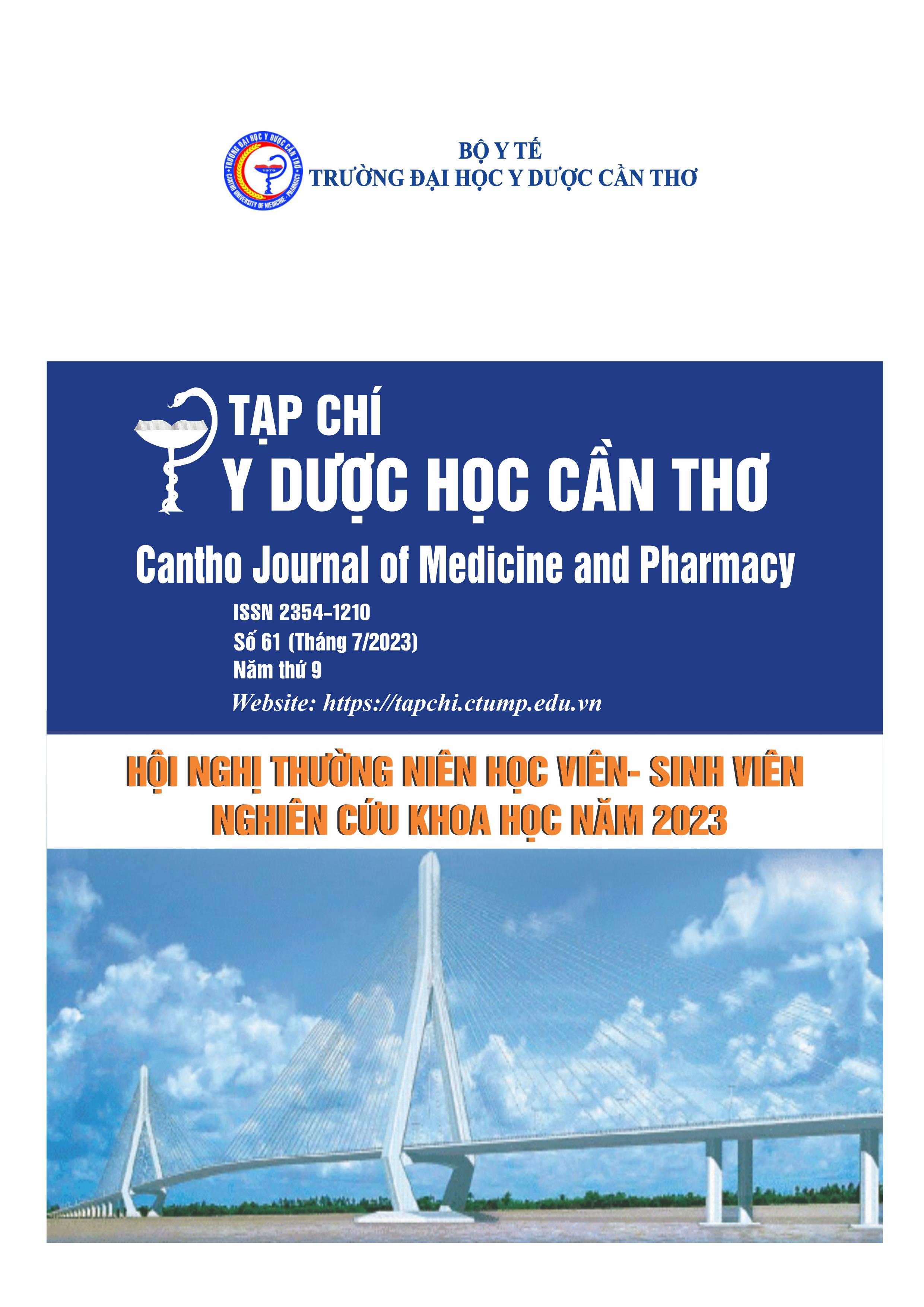ACUTE TOXICITY, COUGH RELIEF AND EXPECTORANT EFFECTS OF STEMONA TUBEROSA EXTRACT ON MICE MODEL
Main Article Content
Abstract
Background: Stemona tuberosa root was often used to treat cough in folk remedies. In Dak Lak, each 2-year-old Bach Bo root can obtain 0.5 kg dried Stemona tuberosa Bo root with tuberostemonin content of 0.5%. Studies had proven that tuberostemmonin is the main component that plays an important role in the antitussive effect of Stemona tuberosa. This was the premise for the production of a cough preparation containing stemonin from Stemona tuberosa roots in Dak Lak. Objectives: To examine the safety and cough relief effect of 50% ethanol extract of Stemona tuberosa root (tuberostemonin 1.2% w/w) in experimental animals Materials and method: The acute toxicities of Stemona tuberosa extract were evaluated on mice (18 – 22 g) according to Do Trung Dam guidelines with the highest oral test dose of 25 g/kg body weight. The cough relief effect was evaluated in ammonia-induced cough model, and the expectorant effect was evaluated according to Menezes et al. with two test doses of 1.2 g/kg and 2.4 g/kg body weight. Results: Stemona tuberosa extract was considered to be non-toxic with an oral Dmax of 25 g/kg body weight. At dose of 2.4 g/kg body weight per day for 7 consecutive days, Stemona tuberosa extract could significantly reduce the number of cough episodes from 60.60 to 25.90. And Stemona tuberosa extract at a dose of 1.2 g/kg body weight twice a day had expectorant effect equivalent to N-acetyl cysteine at a dose of 5.3 mg/kg body weight. Conclusions: Stemona tuberosa extract did not cause acute toxicity at dose of 25 g/kg body weight, and had good expectorant effect and cough relief effect on the experimental model at dose of 2.4 g/kg body weight per day.
Article Details
Keywords
Stemona tuberosa extract, acute toxicity, cough relief effect, expectorant effect
References
2. Phạm Thanh Kỳ, Nguyễn Xuân Dũng, Vũ Ngọc Kim. Alcaloid chính trong rễ củ bách bộ (Stemona lour.) mọc ở Việt Nam. Tạp chí Dược học. 1991. 5, 4-5.
3. Nguyển Văn Tuyển. Nghiên cứu tác dụng giảm ho long đờm của Bách bộ trước và sau chế biến", Tạp chí Dược học. 2010. 407(5), 15-17.
4. Xu YT, Hon PM, Jiang RW, et al. Antitussive effects of Stemona tuberosa with different chemical profiles", J Ethnopharmacol. 2006. 108(1), 46-53. https://www.ncbi.nlm.nih.gov/pubmed/16750339.
5. Xu YT, Shaw PC, Jiang RW, et al. Antitussive and central respiratory depressant effects of Stemona tuberosa, J Ethnopharmacol. 2010. 128(3), 679-84. https://www.ncbi.nlm.nih.gov/pubmed/20219659.
6. Wu Y, Ou L, Han D, et al. Pharmacokinetics, biodistribution and excretion studies of neotuberostemonine, a major bioactive alkaloid of Stemona tuberosa. Fitoterapia. 2016. 112, pp.22-29. https://www.sciencedirect.com/science/article/pii/S0367326X16301010.
7. Đỗ Trung Đàm. Phương pháp xác định độc tính cấp của thuốc. Nhà xuất bản Y học. 2014. 11-190.
8. Hu JR, Jung CJ, Ku SM, et al. Anti-inflammatory, expectorant, and antitussive properties of Kyeongok-go in ICR mice. Pharm Biol. 2021. 59(1), 321-334. https://www.ncbi.nlm.nih.gov/pubmed/33770452.
9. Menezes PMN, Brito MC, de Sá PGS, et al. Analytical and pharmacological validation of the quantification of phenol red in a mouse model: An optimized method to evaluate expectorant drugs. Journal of Pharmacological and Toxicological Methods. 2019. 98, 106586. https://www.sciencedirect.com/science/article/pii/S1056871919300437.
10. Greger H. Structural classification and biological activities of Stemona alkaloids, Phytochemistry Reviews. 2019. 18(2), 463-493. https://doi.org/10.1007/s11101-019-09602-6.
11. Chung HS, Hon PM, Lin G, et al. Antitussive activity of Stemona alkaloids from Stemona tuberosa, Planta Med. 2003. 69(10), 914-20. https://www.ncbi.nlm.nih.gov/pubmed/14648394.
12. Zhou X, Leung PH, Li N, et al. Oral absorption and antitussive activity of tuberostemonine alkaloids from the roots of Stemona tuberosa. Planta Med. 2009. 75(6), 575-80. https://www.ncbi.nlm.nih.gov/pubmed/19214944.
13. Chen XX, Ju CG, Xia LB, et al. The difference in antitussive and expectorant activity between the different polar fractions of crude and processed Stemona tuberose, Chin. J. Exp. Tradit. Med.
2012. 18, 146–149.


